-
 Bitcoin
Bitcoin $106,754.6083
1.33% -
 Ethereum
Ethereum $2,625.8249
3.80% -
 Tether USDt
Tether USDt $1.0001
-0.03% -
 XRP
XRP $2.1891
1.67% -
 BNB
BNB $654.5220
0.66% -
 Solana
Solana $156.9428
7.28% -
 USDC
USDC $0.9998
0.00% -
 Dogecoin
Dogecoin $0.1780
1.14% -
 TRON
TRON $0.2706
-0.16% -
 Cardano
Cardano $0.6470
2.77% -
 Hyperliquid
Hyperliquid $44.6467
10.24% -
 Sui
Sui $3.1128
3.86% -
 Bitcoin Cash
Bitcoin Cash $455.7646
3.00% -
 Chainlink
Chainlink $13.6858
4.08% -
 UNUS SED LEO
UNUS SED LEO $9.2682
0.21% -
 Avalanche
Avalanche $19.7433
3.79% -
 Stellar
Stellar $0.2616
1.64% -
 Toncoin
Toncoin $3.0222
2.19% -
 Shiba Inu
Shiba Inu $0.0...01220
1.49% -
 Hedera
Hedera $0.1580
2.75% -
 Litecoin
Litecoin $87.4964
2.29% -
 Polkadot
Polkadot $3.8958
3.05% -
 Ethena USDe
Ethena USDe $1.0000
-0.04% -
 Monero
Monero $317.2263
0.26% -
 Bitget Token
Bitget Token $4.5985
1.68% -
 Dai
Dai $0.9999
0.00% -
 Pepe
Pepe $0.0...01140
2.44% -
 Uniswap
Uniswap $7.6065
5.29% -
 Pi
Pi $0.6042
-2.00% -
 Aave
Aave $289.6343
6.02%
How to observe the moving average adhesion but no direction selection?
Moving average adhesion in crypto trading signals market indecision, with price closely hugging the moving average line, often during low volatility or consolidation phases.
Jun 19, 2025 at 04:28 pm
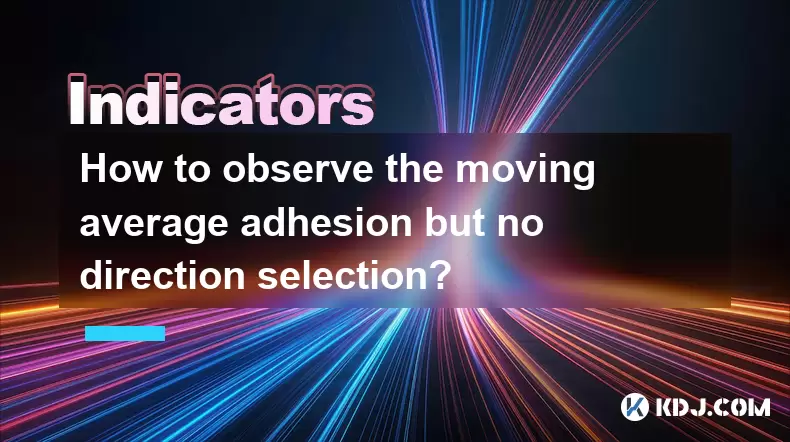
Understanding Moving Average Adhesion in Cryptocurrency Trading
In cryptocurrency trading, moving average adhesion refers to a scenario where the price of an asset closely follows its moving average line. This phenomenon is commonly observed during periods of low volatility or when the market lacks strong directional momentum. Traders often interpret this as a sign of consolidation or indecision among market participants.
The key characteristic of moving average adhesion without direction selection is that the price does not exhibit a clear uptrend or downtrend. Instead, it remains within a tight range around the moving average line. This can occur with any type of moving average—be it simple (SMA), exponential (EMA), or weighted (WMA).
Identifying Moving Average Adhesion on Charts
To observe moving average adhesion, traders should apply one or more moving averages to their price chart. The 50-period and 200-period SMAs are widely used for identifying long-term trends, while shorter-term EMAs like the 9 or 21 EMA help detect immediate price behavior.
When the price hovers close to the moving average line for an extended period, it indicates a lack of strong buying or selling pressure. Visually, this appears as a nearly horizontal alignment between the price action and the moving average line.
Key signs include:
- Price bars fluctuating narrowly around the moving average.
- Minimal crossovers between price and the moving average.
- Low volatility as seen through compressed Bollinger Bands or reduced ATR (Average True Range).
This pattern is especially relevant in crypto markets due to their tendency to experience both sharp trends and prolonged sideways movement.
Technical Indicators That Complement Moving Average Adhesion
While moving average adhesion alone doesn't indicate direction, combining it with other technical tools can provide deeper insights into potential breakouts or breakdowns.
One effective approach involves using:
- Bollinger Bands: When prices stick close to the middle band and the bands contract, it signals decreasing volatility and possible upcoming directional movement.
- MACD (Moving Average Convergence Divergence): Flat MACD lines and shrinking histograms suggest weak momentum, reinforcing the idea of a stagnant market.
- Volume indicators: Declining volume during adhesion phases confirms market indecision and hints at a potential breakout once volume picks up again.
These tools help confirm whether the current adhesion phase is likely to result in a trend continuation or reversal.
Practical Steps to Monitor Moving Average Adhesion
For traders looking to actively monitor moving average adhesion in real time, the following steps can be followed:
- Choose a suitable charting platform: Platforms like TradingView or Binance's native tools offer customizable moving averages and overlays.
- Apply multiple moving averages: Overlay two or three different moving averages (e.g., 20 EMA and 50 SMA) to see how the price interacts with them.
- Set alerts: Use built-in alert systems to notify you when the price deviates significantly from the moving average line.
- Use time-frame analysis: Compare price behavior across different intervals (e.g., 1-hour, 4-hour, daily) to assess the strength of adhesion across broader contexts.
- Record observations: Keep a trading journal noting instances of adhesion and what happened afterward to refine future interpretations.
Each of these steps allows traders to better understand market structure and avoid premature entries based solely on price proximity to a moving average.
Interpreting Market Psychology Behind Adhesion
Understanding market psychology during moving average adhesion helps contextualize why prices behave the way they do. In such scenarios, neither buyers nor sellers have control, leading to a tug-of-war equilibrium.
Traders tend to wait for clearer signals before committing capital, which results in narrow price ranges. This hesitation is common after major news events or following significant rallies or dumps, where uncertainty dominates.
During these phases:
- Stop-loss orders cluster tightly around the moving average.
- Large players may be accumulating or distributing positions subtly.
- Retail traders often become inactive due to unclear profit opportunities.
Recognizing this psychological backdrop enables traders to anticipate potential shifts rather than react impulsively to minor price fluctuations.
Frequently Asked Questions (FAQ)
Q: Can moving average adhesion predict a trend reversal?
A: While moving average adhesion itself does not predict reversals, it can signal a pause in the current trend. Traders often use additional confirmation tools like candlestick patterns or volume spikes to assess whether a reversal is imminent.
Q: Is moving average adhesion useful in all cryptocurrency pairs?
A: Yes, moving average adhesion can be observed across all crypto pairs, but its effectiveness depends on the pair’s liquidity and volatility. Major pairs like BTC/USDT or ETH/USDT tend to show clearer patterns compared to smaller altcoins.
Q: How long does a typical moving average adhesion phase last?
A: The duration varies depending on market conditions. Some adhesion phases last only a few hours, while others extend over days. Timeframe analysis helps determine the significance of each instance.
Q: Should I trade during moving average adhesion?
A: It's generally advisable to remain cautious during moving average adhesion unless there's a clear breakout or breakdown. Trading without direction increases the risk of entering false moves or getting caught in whipsaw movements.
Disclaimer:info@kdj.com
The information provided is not trading advice. kdj.com does not assume any responsibility for any investments made based on the information provided in this article. Cryptocurrencies are highly volatile and it is highly recommended that you invest with caution after thorough research!
If you believe that the content used on this website infringes your copyright, please contact us immediately (info@kdj.com) and we will delete it promptly.
- Filecoin, Secure Storage, and Avalanche Enterprises: A New Era of Blockchain Collaboration
- 2025-06-20 14:45:13
- SEI Price Surge: Decoding the Reasons Behind the Rise
- 2025-06-20 14:25:12
- Cryptos for the Long Haul: Early Investors' Edge in 2025
- 2025-06-20 14:25:12
- Bitcoin Price in June 2025: Riding the $100K Wave?
- 2025-06-20 14:45:13
- Bitcoin Cash (BCH) Momentum: Riding the Wave of Geopolitical Uncertainty
- 2025-06-20 14:50:12
- Crypto, Bitcoin, and Uptime: Decoding the Latest Trends and Insights
- 2025-06-20 14:50:12
Related knowledge

Is it a real drop when KDJ crosses but the trading volume shrinks?
Jun 20,2025 at 03:49pm
Understanding KDJ and Its Role in Cryptocurrency TradingIn the realm of cryptocurrency trading, technical analysis plays a crucial role in identifying potential price movements. The KDJ indicator, also known as the stochastic oscillator with a J line added for momentum confirmation, is widely used by traders to gauge overbought or oversold conditions. I...
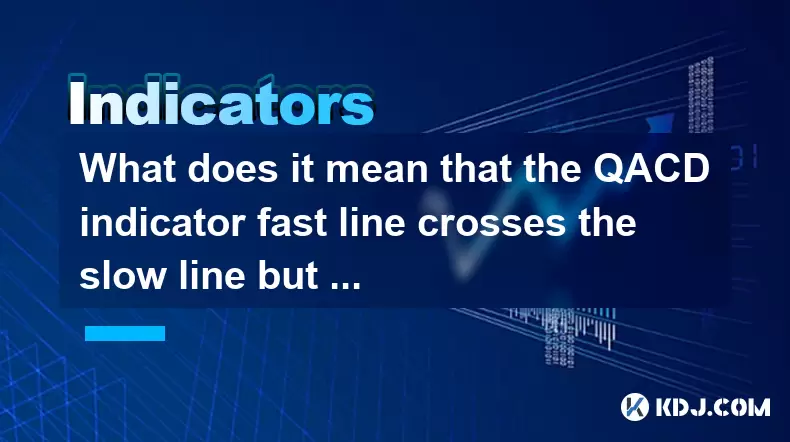
What does it mean that the QACD indicator fast line crosses the slow line but does not increase in volume?
Jun 20,2025 at 12:22pm
Understanding the QACD Indicator and Its ComponentsThe QACD (Quantitative Accumulation Convergence Divergence) indicator is a technical analysis tool used by traders to identify potential trend reversals, momentum shifts, and entry or exit points in cryptocurrency markets. It consists of two primary lines: the fast line, which reacts more quickly to pri...
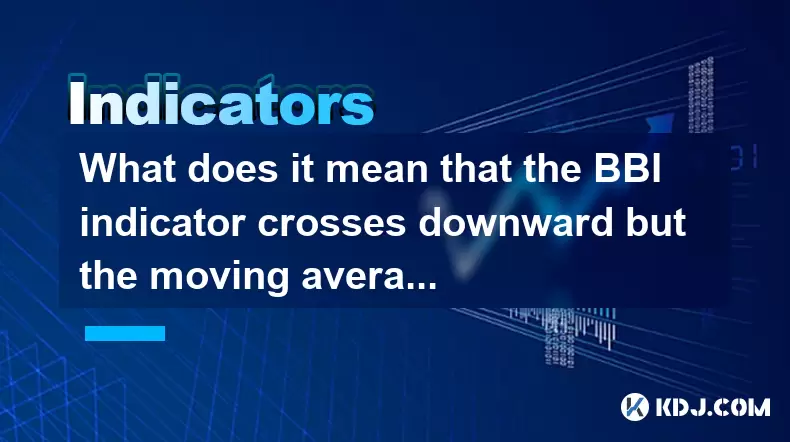
What does it mean that the BBI indicator crosses downward but the moving average does not cross?
Jun 20,2025 at 03:07pm
Understanding the Role of Blockchain in Cryptocurrency TransactionsBlockchain technology is the foundational infrastructure behind most cryptocurrencies. It serves as a decentralized, distributed ledger that records all transactions across a network of computers. This ensures transparency and eliminates the need for a central authority like a bank. Each...
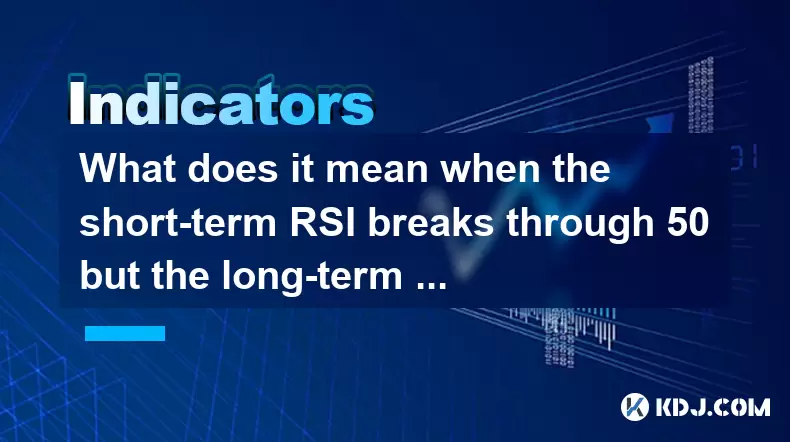
What does it mean when the short-term RSI breaks through 50 but the long-term RSI does not move in the RSI indicator?
Jun 20,2025 at 10:42am
Understanding the RSI Indicator and Its Dual-Term ApplicationThe Relative Strength Index (RSI) is a widely used momentum oscillator in technical analysis, primarily for identifying overbought or oversold conditions in an asset’s price movement. It typically operates on a scale from 0 to 100, with levels above 70 considered overbought and below 30 consid...
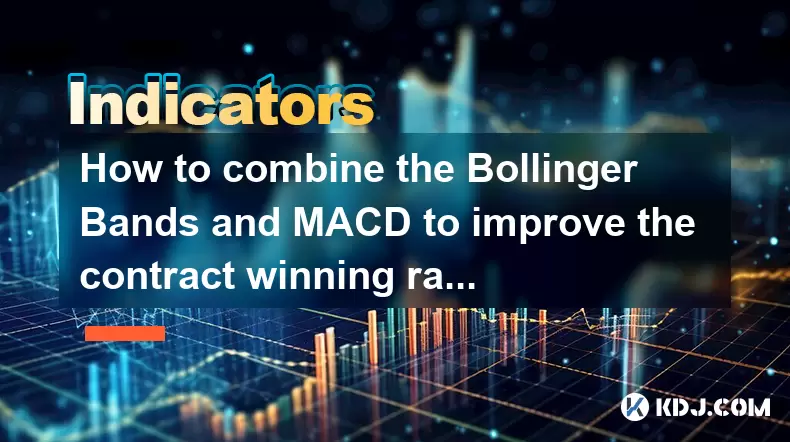
How to combine the Bollinger Bands and MACD to improve the contract winning rate?
Jun 19,2025 at 06:35pm
Understanding Bollinger Bands and MACD IndicatorsTo effectively combine Bollinger Bands and the MACD (Moving Average Convergence Divergence), it's essential to first understand what each indicator represents. Bollinger Bands consist of a middle moving average line and two outer bands that adjust based on market volatility. When prices move toward the up...
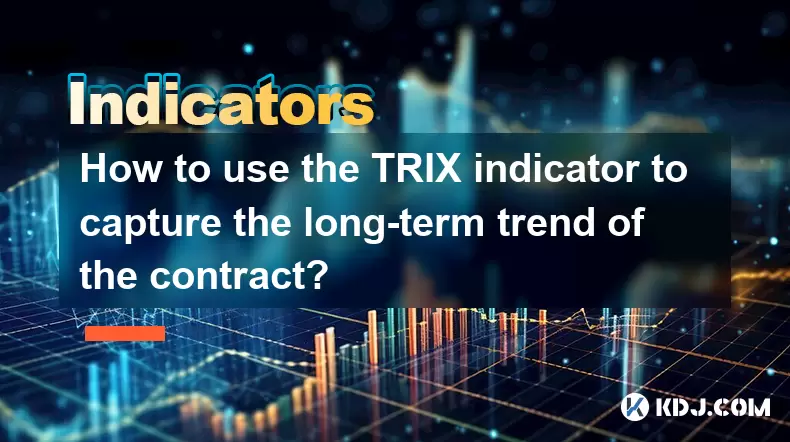
How to use the TRIX indicator to capture the long-term trend of the contract?
Jun 20,2025 at 09:14am
What Is the TRIX Indicator?The TRIX (Triple Exponential Average) indicator is a momentum oscillator used to identify oversold and overbought conditions, as well as potential trend reversals in financial markets. It is calculated by applying a triple exponential moving average to price data and then taking the percentage rate of change of that smoothed v...

Is it a real drop when KDJ crosses but the trading volume shrinks?
Jun 20,2025 at 03:49pm
Understanding KDJ and Its Role in Cryptocurrency TradingIn the realm of cryptocurrency trading, technical analysis plays a crucial role in identifying potential price movements. The KDJ indicator, also known as the stochastic oscillator with a J line added for momentum confirmation, is widely used by traders to gauge overbought or oversold conditions. I...

What does it mean that the QACD indicator fast line crosses the slow line but does not increase in volume?
Jun 20,2025 at 12:22pm
Understanding the QACD Indicator and Its ComponentsThe QACD (Quantitative Accumulation Convergence Divergence) indicator is a technical analysis tool used by traders to identify potential trend reversals, momentum shifts, and entry or exit points in cryptocurrency markets. It consists of two primary lines: the fast line, which reacts more quickly to pri...

What does it mean that the BBI indicator crosses downward but the moving average does not cross?
Jun 20,2025 at 03:07pm
Understanding the Role of Blockchain in Cryptocurrency TransactionsBlockchain technology is the foundational infrastructure behind most cryptocurrencies. It serves as a decentralized, distributed ledger that records all transactions across a network of computers. This ensures transparency and eliminates the need for a central authority like a bank. Each...

What does it mean when the short-term RSI breaks through 50 but the long-term RSI does not move in the RSI indicator?
Jun 20,2025 at 10:42am
Understanding the RSI Indicator and Its Dual-Term ApplicationThe Relative Strength Index (RSI) is a widely used momentum oscillator in technical analysis, primarily for identifying overbought or oversold conditions in an asset’s price movement. It typically operates on a scale from 0 to 100, with levels above 70 considered overbought and below 30 consid...

How to combine the Bollinger Bands and MACD to improve the contract winning rate?
Jun 19,2025 at 06:35pm
Understanding Bollinger Bands and MACD IndicatorsTo effectively combine Bollinger Bands and the MACD (Moving Average Convergence Divergence), it's essential to first understand what each indicator represents. Bollinger Bands consist of a middle moving average line and two outer bands that adjust based on market volatility. When prices move toward the up...

How to use the TRIX indicator to capture the long-term trend of the contract?
Jun 20,2025 at 09:14am
What Is the TRIX Indicator?The TRIX (Triple Exponential Average) indicator is a momentum oscillator used to identify oversold and overbought conditions, as well as potential trend reversals in financial markets. It is calculated by applying a triple exponential moving average to price data and then taking the percentage rate of change of that smoothed v...
See all articles

























































































